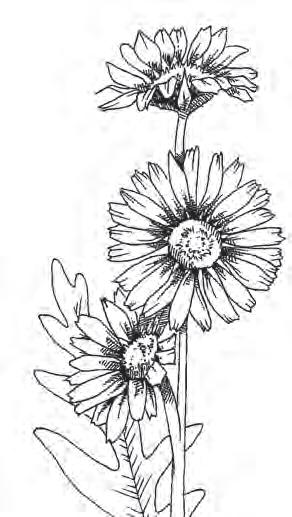
2 minute read
INTRODUCTION
Inside this field guide you’ll find information and illustrations that describe the bats, bees, birds, grasses, shrubs, trees, and wildflowers that make up our rooftop ecosystem. You’ll also find interviews with the key collaborators who helped us develop it—dialogues in which these experts offer different perspectives on rooftop ecology as they share their unique wealth of knowledge. Altogether this guide is intended to give you a deeper understanding of the potential of an ecological rooftop network and provide a glimpse into the ideas and research underpinning our particular case study experiment. A little background: At Studio Gang, the act of building relationships between people and the environment is the essence of our design approach, and the transformation of our Chicago headquarters was no exception. To complement the spaces for research, experimentation, and making that we created inside our art deco building, we also looked up, to the building’s rooftop, to establish a unique green roof—a patch of Midwestern prairie that we’ve nicknamed our “sky island” in reference to naturally occurring high-elevation environments where an abundance of species is found. In this outdoor living laboratory we work hands-on with natural systems, learning more about ecology and investigating how urban green spaces can support biodiversity and other critical needs while bringing us humans closer together. The development of the rooftop has been a collaborative project from the start. In 2015 Omni Ecosystems provided us with the material foundation: a lightweight growing media installed on the roof that was planted with a seed mix of more than fifty varieties of wildflowers and grasses. Larger vegetation was planted soon afterward. Because regionally appropriate plants best support local wildlife, which faces increasing habitat loss in
Chicago and other urban environments, the majority of the prairie’s vegetation is endemic to this area. One notable non-local plant was crucial to the prairie’s establishment. Winter wheat was planted that first year to provide a wealth of benefits such as minimizing erosion. Harvesting the wheat, which we did in collaboration with Omni’s sister organization the Roof Crop, resulted in sixty pounds of high-grade pastry flour—a delicious additional benefit and proof of the viability of rooftop wheat production. As the prairie has grown we’ve continued to work with a variety of experts to cultivate it into a lush habitat and to learn from its development—efforts that include an annual “bioblitz,” which we conduct each fall with the help of ecologists from Applied Ecological Services. During these data collection events, we identify and count the species found on the roof using citizen science techniques. Tracked over the years, the aggregated data will help us determine the impact of our green roof on biodiversity in the area and target ways in which we might adjust our ecosystem. Other efforts zoom in on specific species. For two years we’ve partnered with the Chicago Honey Co-op to establish and maintain rooftop beehives, helping to harvest more than forty pounds of honey in our first year alone. We’ve also partnered with scientists at Chicago’s Urban Wildlife Institute to support a biodiversity monitoring project focused on bats in urban and exurban environments. In summer 2018, we expanded our work with pollinators by embarking on studies with Monarch butterfly experts. Ultimately with our sky island we seek to make a positive impact now and in the future: rehabilitating species whose populations have been depleted by urbanization, helping develop best practices for urban green roofs, and sparking greater observation and engagement with the natural world.
Advertisement











